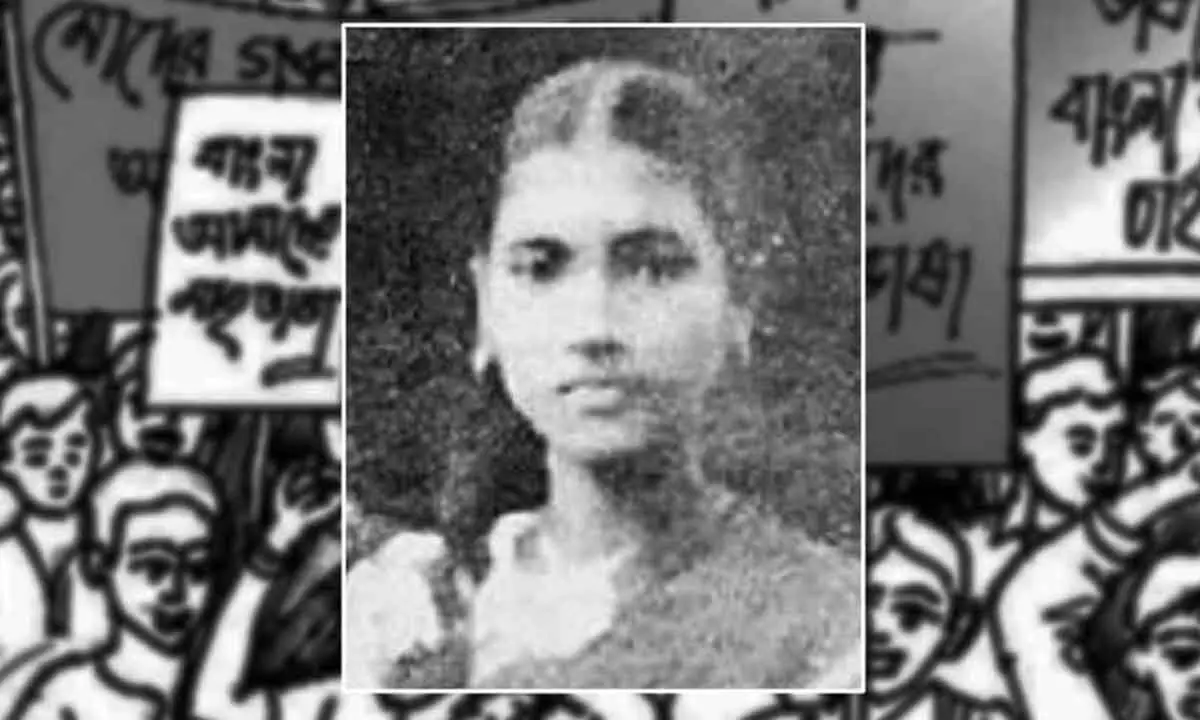Observing May 19 as India’s ‘Language Martyr Day’ will be best tribute to Kamala Bhattacharya
The struggle for language rights and recognitions continued even after India achieved independence
image for illustrative purpose

India's journey to Independence was paved with the sacrifices of countless martyrs. The plight of Bengali Sanatanis, particularly during significant historical events like partition and the language movement reflects a profound saga of struggle, sacrifice and resilience. Partition inflicted deep wounds upon the social fabric of Bengal, whose Hindus were compelled to leave their ancestral homes due to the machinations of divisive politics driven by familial ambitions and the imposition of alien identities.
The Bengali Hindus found themselves entangled in the web of dynastic politics and linguistic chauvinism. Exploitations for political gains led to further fragmentation and suffering. In the face of adversity, individuals like Dhirendranath Dutta emerged as a beacon of courage and conviction. His impassioned plea for the recognition of Bengali with its traditional script as a state language in the Pakistan Assembly exemplified the indomitable spirit of the Sanatanis. However, his noble efforts were met with suppression as he disappeared at the hands of the elite forces of Pakistan, underscoring the brutal repression faced by those who dared to defy the diktat.
The struggle for language rights and recognitions continued unabated even after the dawn of independence. Heroes of the language movement embarked on a valiant quest to safeguard the sanctity of the Bengali language. Their selfless sacrifices, often at the cost of their lives, epitomized the unwavering commitment of Bengali Hindus to preserve their cultural heritage and linguistic identity.
The presence of Bengali Hindus played a significant role in shaping the cultural and demographic landscape of Assam. The name "Assam" itself is believed to have originated from the Ahoms, who migrated to the region in the 13th century. During the colonial era, Assam was part of the Bengal Presidency and Bengali was the state's official language from 1836 to 1872. This historical connection underscores the deep-rooted ties between Bengal and Assam, especially in terms of language and culture.
While the exact etymology remains ambiguous, Assam’s history is a tapestry woven with diverse cultural threads, including those of Bengali origin. Even today, Bengali Hindus constitute a sizable portion of Assam's population, with most settled in the Barak Valley. Their settlement in these regions predates modern boundaries and is intertwined with the historical migrations and cultural exchanges that have shaped the region over centuries.
Assam boasts of the second largest Bengali Hindu population in India. However, despite their significant numbers, they have often found themselves grappling with questions of identity and belonging in Assam's complex social and political landscape.
The Cachar Gana Sangram Parishad was established on February 5, 1961, to protest the imposition of Assamese in the Bengali-speaking Barak Valley. The Bengalis embarked on a courageous struggle to secure recognition for Bangla, as one of the state languages of Assam. This endeavour was not merely a linguistic campaign but a fervent assertion of cultural identity and heritage, deeply rooted in the hearts of the people. The movement, characterized by its unwavering resolve and profound sacrifices, reached its zenith on May 19, 1961, in Silchar. It was the culmination of years of persistent advocacy, marked by the sacrifices, including 11 young martyrs.
While the International Mother Language Day came about on February 21, 1952, commemorating the Bhasha Andolan of East Pakistan (now Bangladesh), which sought recognising Bengali as an official language, it is crucial not to overlook the sacrifices of martyrs from Barak Valley. They laid down their lives in the struggle against the hegemony aimed at eradicating Bengali language and establishing Assamese as the sole official language of the State.
While this movement is widely known, the sacrifices of Kamala Bhattacharya, Kanailal Niyogi, Chandicharan Sutradhar, Hitesh Biswas, Satyendra Deb, Kumud Ranjan Das, Sunil Sarkar, Tarani Debnath, Sachindra Chandra Paul, Birendra Sutradhar and Sukamal Purkayastha, often go unnoticed.
Kamala Bhattacharya, a 16-year-old girl, the world's first female language martyr, sacrificed her life fighting against the hegemony of the Assam government, which ignored the linguistic diversity of the state. The sacrifice serves as a poignant reminder of the struggles faced by minority communities in asserting their identity and rights in a diverse and sometimes polarized society.
The legacy of these heroes resonates with the ongoing debates surrounding language, ethnicity, and citizenship in Assam and beyond. Despite enduring unimaginable pain and suffering, Bengali Hindus remained steadfast in their dedication to the cause of freedom. Their significant contributions to the Indian independence movement underscored their unwavering resolve to rid the nation of colonial oppression. The martyrs of the Language Movement exemplified unwavering commitment to the preservation and promotion of their linguistic heritage. Therefore, it is imperative that India formally recognizes May 19th as Language Martyr Day of India, to honour their memory and commemorate their contributions to the nation's linguistic and cultural tapestry.
(The writer is a scientist, social worker and General Secretary of Bongo Bhashi Mahasabha Foundation)

